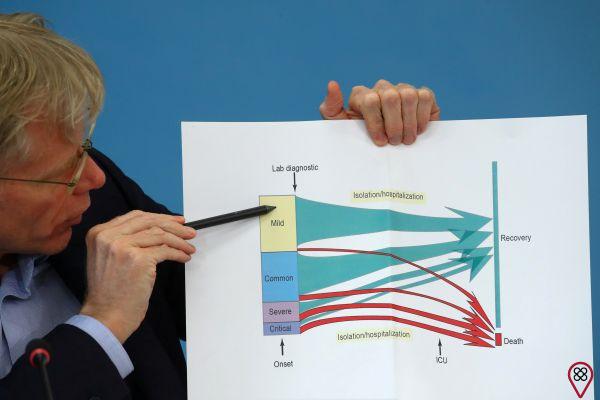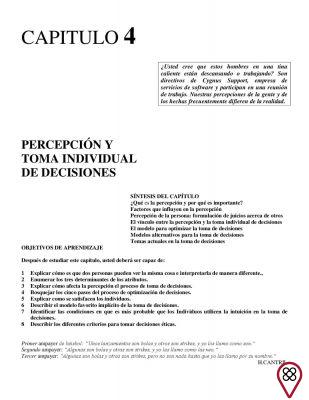Have you ever felt or heard someone say something like, "There's no way for me anymore" or "It's impossible to change this situation I'm in"? For know that statements like this can be signs of what psychology calls learned helplessness.
Much like the symptoms of generalized anxiety disorder (GAD) and the symptoms of the feeling of anxiety or distress itself, learned helplessness has a few different processes. Especially the physical symptoms.
Then check out the article we prepared on this subject and stay on top of this very serious physical and mental health problem!
What is learned helplessness?

In summary, learned helplessness occurs when a person repeats stimuli (actions, attitudes, situations, etc.) that generate suffering for them, making it difficult to avoid these situations. That is, little by little, it creates the distorted effect that it is impossible not to suffer because of those situations, so the body itself begins to suffer.
And what is helplessness in psychoanalysis?
Psychoanalysts believe that, exposed to so many negative stimuli and no hope or effort for improvement, the organism simply surrenders. That is, he becomes helpless and assumes a posture of giving up.
Whose theory of learned helplessness is it?
In short, the theory of learned helplessness was created by American psychologists Martin Seligman and Steven Maier, in the late 1960s. The thesis was the result of a study they did on the behavior of dogs exposed to electroshocks.
The experiment consisted of placing two groups of dogs in two different cages. In the first cage, weak but uncomfortable electroshocks occurred from time to time; in the second cage, the same thing happened, but there was a button the dogs could press to end the electroshocks.
After some time kept in these cages, the groups were switched. The group that learned to use the button, when exposed to shocks that could not be interrupted, in the first cage, were not satisfied and looked for a way to interrupt them, to the point of breaking the cage and escaping.
On the other hand, the group in the first cage, when they went to the second, where there was a button that stopped the shocks, was so used to suffering and conformism to suffering that they did not even try to prevent or stop the shocks. In the end, they simply accepted the inconvenience.
So that's where the idea of learned helplessness came from: when exposed to continuous and seemingly endless suffering, we learn to think that any unpleasant situation will have no end: learned helplessness.
What is the feeling of helplessness?
According to the Oxford dictionary, the word “helplessness” can be used synonymously with “abandonment”, which introduces its meaning. Yet being helpless is something else. Also according to the dictionary, helplessness is “the state of what or who is abandoned, deprived of material and/or moral help”.

Then we can delve deeper into the meaning that being helpless is not just being in suffering, but in suffering. lonely (abandoned) and deprived of help and what is needed to get out of that situation.
It's what we feel when faced with situations in which we suffer a disappointment, a loss, a fall, a setback and nothing and no one comes to help us — or even tries, but cannot help us.
How can we develop this kind of behavior?
As the name explains, this behavior is learned, that is, our organism gets used to it according to the experiences we go through. So it's a posture we've developed over time. Let's understand:
An example: every day you suffer horrible stomach pains, then you realize that you have these pains after having lunch at 13 pm. But every day at 13 pm you are hungry, so it seems inevitable to have lunch at this time and, consequently, inevitable to suffer from horrible stomach pains.
Seems simple to solve, doesn't it? You may think that it is enough to have lunch at 12:14 or 13:10, or even take some medication, but think of a person who has gone through the same situation of having lunch at 15:XNUMX and suffering pain in the last XNUMX or XNUMX years, without ever having seen or thought of a solution.
It's going to seem unsolvable, isn't it? So this is how learned helplessness behavior begins: our sufferings are so intense and so frequent that they give us the idea that there is nothing else we can do to avoid or fight them, as if suffering were even our destiny. .
However, this is a distorted view. As the saying goes: “The only thing for which there is no way is death” — and sometimes there is even a way out for it! So it's possible to combat learned helplessness, and we'll talk more about that in the next topics.
Main symptoms of learned helplessness
We can cite examples of learned helplessness, of situations in which it happens. So, to help us do that, let's go through some symptoms of this problem.

- Acceptance: “This is who I am, I will never change” is a great sign of learned helplessness. Because it shows that we have suffered so much and for so long with a certain problem that we simply accept that it is so, period;
- Frustration: Is there anything worse than rowing, rowing and seeing that the boat doesn't move? Frustration is both a symptom and a cause of learned helplessness, because it comes when we feel that we've tried but still don't see improvement or change;
- Low self esteem: “I knew it was going to go wrong” and “I always do everything wrong” are common phrases in the mouths of people who suffer from learned helplessness. In this way, the suffering is so intense and brings such a feeling of incapacity that the person starts to blame himself excessively for his problems;
- Sleep disorders: The head of an anxious and frustrated person rarely rests, and learned helplessness is to blame for this, because the moment when silence reigns for us to sleep brings reflection and a recapitulation of everything we did wrong or even didn't do during the day, then insomnia and other problems arise;
- Withdrawal: Along the way, if conquest or victory seems distant or unattainable, the person with learned helplessness always gives up (“after all, it always goes wrong, right?”), and this is the result of low self-esteem and accumulated frustrations;
- Inertia: Many people who suffer from learned helplessness don't feel that they are “regressing” in life, but they also don't feel progress, so there's an uncomfortable feeling of stagnation, of inertia, of not moving anywhere;
- Insensitivity to suffering: having a bad day is bad for almost everyone, but for someone who suffers from learned helplessness it's just another "normal" day, because he's already developed a kind of insensitivity to anguish, suffering and melancholy. Every day he feels it, so why be scared to feel it again?
Tips for not developing learned helplessness
As with any problem of psychological origin, suffering is very individual and can be linked to other problems, such as generalized anxiety disorder (GAD), panic syndrome, depression, among others. So seek expert help if you think you suffer from learned helplessness.

But we have prepared a list of 8 tips, each related to one of the themes of the last topic, that can help you fight and get out of this situation. Check out:
- Acceptance: Everything in life is transient. Understand this, assimilate this. What is good passes, as well as what is bad. So don't accept to remain in a bad situation. If you're uncomfortable, try to leave. Do your best, try new solutions… Anyway, keep moving;
- Frustration: Much of the frustration can be fought when we realize that we can't even do some things, but we did so many others! So start recording and remembering your small achievements, whether at the end of a day or a year;
- Low self esteem: You have value. You are capable and you will make it. Think of all the times when everything was against you and you made it. Also, surround yourself with people who know your story and who can help you remember it whenever possible;
- Sleep disorders: Are you not wanting to make the day longer than 24 hours or taking on more than you can handle? Try to set more realistic and easier goals at the beginning, because then you will feel fulfilled and you will be able to see progress and achievements on your way;
- Withdrawal: Sometimes the urge to give up can only be avoided by one thing: discipline. When you develop the discipline to go all the way, even if it goes wrong, your life changes and you stop thinking only about the outcome. The secret is to learn to value the walk to it even more;
- Inertia: Move, try, look for solutions, ask for advice, ask for help, ask for help. No matter what you do, do something. Only trying to get out of this situation will get you out, even if it takes a while. So it's important to always keep trying;
- Insensitivity to suffering: Just stop thinking that it's okay to think that a bad day, week, or phase means a bad life. Allow yourself to feel sad, instead of naturalizing sadness as normal. And then turn that into fuel to get out of this situation!
- Ask for help (really!): Read more in the next topic, but keep one thing in mind: weak is not the one who asks for help; this is the most courageous of all, because it recognizes its limitations. So how about seeking professional help for your problem?
How to treat learned helplessness?
Learned helplessness how to treat? Treatment for learned helplessness varies widely. The first step is to recognize the problem or simply that something is not right.
The next step is to combine three things: desire, movement for change and psychotherapeutic treatment. With the help of a psychologist, you will understand the origin of your learned helplessness, what causes this situation and, of course, how it is possible to combat it. So seek help as soon as possible!
You may also like
- Understand how reverse psychology works
- Check out which exercises improve your emotional health
- Discover what wellness coaching is
Finally, learned helplessness is a condition that causes a lot of suffering, both stimulating and coming from the feeling that we cannot get rid of negative stimuli, which naturalize suffering. But this problem has a solution and you will get out of this situation. Seek therapeutic help and believe in your ability!
























